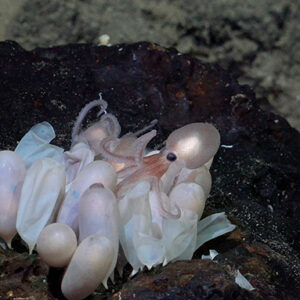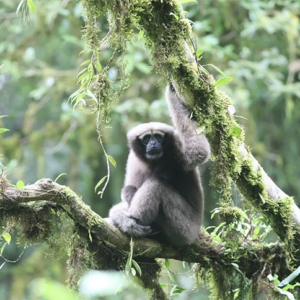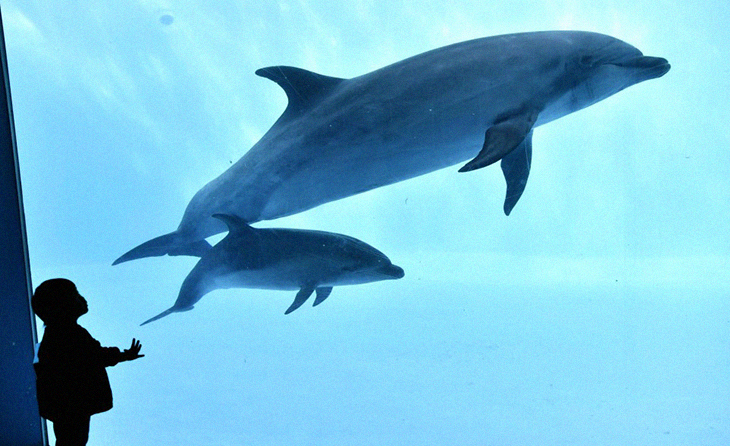
Lots of people love to see animals at zoos, parks, and aquariums. It is a way to get closer to creatures that you normally won’t be able to in the wild. But these captive animals surely would rather be free in their own habitats. It is unfortunate that we “imprison” these animals for our own pleasure. Except of course for those endangered species that need protecting, or those that would not survive in the wild.
But there is good news for captive animals, a life-sized, realistic, robot-dolphin could finally signal the start to end captivity in marine-parks and aquariums for good. Edge, a US based animatronics company, has designed an amazing mechanical mammal that seems as playful as the real thing, and the company hopes that the robot will soon be used to replace captive dolphins in aquariums, as well as in Hollywood films.
The robot-dolphin can swim, nod, and interact with humans. The developers claim the mechanical animal is nearly identical to the marine mammal, and can coexist with robotic versions of predators like great white sharks and even with massive robotic reptiles of the Jurassic era millions of years ago.
But, it comes with a steep price tag of $26 million. However, the robot-dolphin is truly an cruelty-free alternative to the capture and confinement of live animals for our entertainment, it does seem worth it though, and may actually prove cheaper than the real thing in the long run. It weighs about 550 pounds, and has medical-grade silicone skin. It offers an alternative to the profitable business of capturing, breeding, and training live animals.
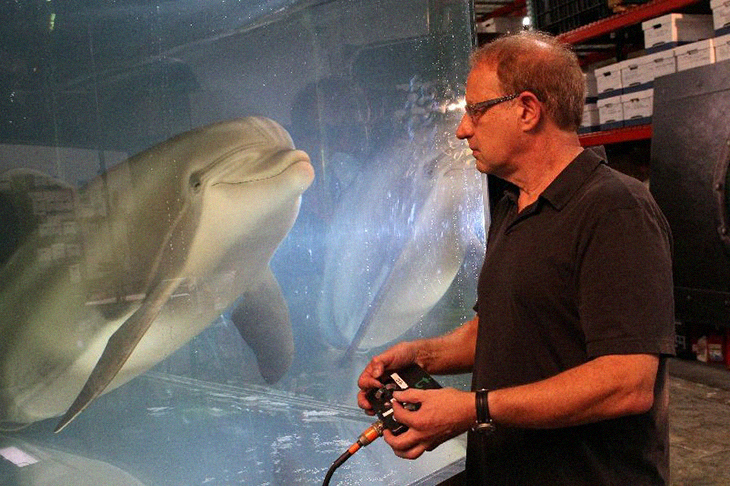
Edge Industry CEO and founder Walt Conti said, “It’s surprising there are 3,000 dolphins currently in captivity to generate several billion dollars just for dolphin experiences. There’s obviously an appetite to love and learn about dolphins and so we want to use that appetite and offer different ways to fall in love with the dolphin.”
For some decades now, animal rights activists have lambasted marine parks using dolphins and other intelligent, self-aware creatures for the sake of human amusement. They consider it as inhumane acts that should not be allowed to continue. Even Hollywood has had movies like Free Willy (1993) and the documentary Blackfish (2013) to help educate people about miserable living conditions faced by orcas and other intelligent marine mammals deprived of their natural habitat and forced to live in small enclosures at marine parks.
There is increased outrage in other countries as well. Canada and about 20 European countries have enforced a ban on dolphins, porpoises, and whales being bred, imported or exported, captured or held in captivity for entertainment purposes. Edge Industry hopes that its extensive experience in animatronics, as seen in Hollywood films like Free Willy, The Abyss, Deep Blue Sea, and several other films, will provide for a humane alternative to viewing creatures that should be left to their natural habitats in the wild. They have worked closely with marine biologists to reproduce the physiology of dolphins and nail their natural behavior and movements.
Roger Holzberg, creative director of animatronics at Edge, said, “Everyone wants to know if using an animatronic dolphin is different to using a real dolphin. The truth is in many ways they are the same. If you want to design a show that uses real dolphins you have to capture real dolphins, train them and get them to do that show,” he continued. “with creating robots you have to do exactly the same thing. The difference is you don’t have to have breeding programs, worry about safety with human beings.”
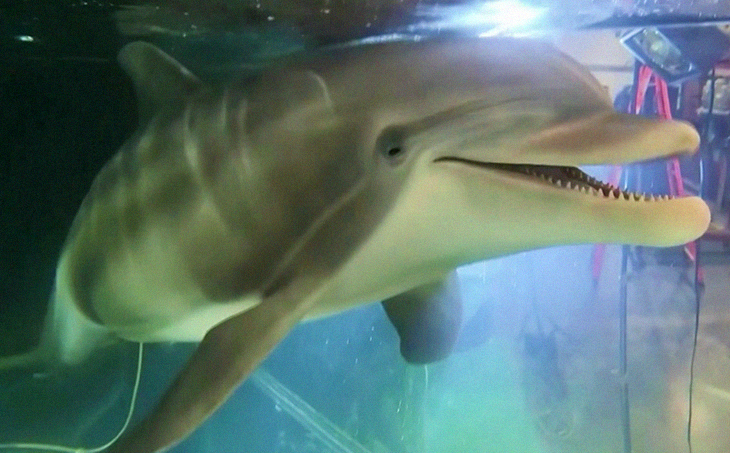
However, there is a decrease in demand for Edge Industry creations in Hollywood, as major film studios opted for computer-generated images rather than animatronics. That is why the company is now focusing on developing attractions for theme parks, and soon, several robot-dolphins will be found in marine parks being constructed in China.
Holzberg said, “The idea of this pilot is really to create a Sesame Street underwater. Those characters taught a generation how to feel about different kinds of aspects of human kind in ways that hadn’t been imagined before. And that’s what we dream of in this project.”
Needless to say, animal rights activists welcome this scenario and hope to end animal captivity at marine theme parks. PETA’s Katherine Sullivan stressed, “There is an end in sight to cruel ‘swim with dolphins’ programs, for which young dolphins are traumatically abducted from their ocean homes and frantic mothers, sometimes illegally. “
It is definitely a welcome start to end captivity. Hopefully it will not stop with marine mammals, but continue to land and air animals as well. We really shouldn’t keep animals captive for our own amusement. Of course pets are excluded from this, as they are not captives, but more of lovable companions. Looks like the future looks bright, at least for dolphins, for now.
What are your thoughts? Please comment below and share this news!
True Activist / Report a typo
